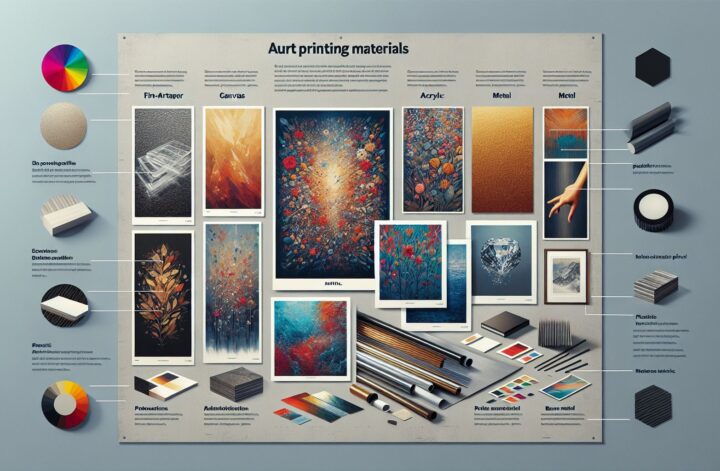In today’s digital age, where screen time often dominates our daily lives, there’s still something special about holding a beautifully printed piece of work in your hands. Whether it’s a photograph, a brochure, or a promotional flyer, the quality of the printed material plays a significant role in capturing attention and conveying a message effectively. However, with numerous printing materials available in the market, choosing the right one can be a daunting task. In this article, we will explore a range of printing materials, discussing their characteristics, applications, and the factors to consider for optimal printing results.
1. Introduction to Printing Materials
Printing materials are the various substrates used to produce high-quality printed output. These materials typically include paper, cardstock, vinyl, fabric, and many other specialized substrates. Each type of printing material offers its own unique set of qualities that contribute to the final printed result. Understanding these materials and their characteristics is crucial in establishing the desired outcome for any printing project.
2. Common Printing Materials
2.1 Paper
When it comes to printing, paper has long been the go-to material. Its versatility, availability, and cost efficiency make it an excellent choice for a wide range of printing applications. The different types of paper include matte, glossy, and satin, each offering distinct qualities with varying levels of sheen and texture. For instance, glossy paper provides vibrant colors and sharp details, making it ideal for photographs and brochures showcasing high-resolution images. Matte paper, on the other hand, provides a more subdued look, perfect for text-heavy prints like books and magazines.
2.2 Cardstock
Cardstock, also known as cover stock, is a thicker and sturdier paper material commonly used for business cards, postcards, invitations, and book covers. Its greater weight and rigidity compared to regular paper allow for a more professional and durable finish.
2.3 Vinyl
Vinyl is a synthetic material known for its durability and water resistance, making it suitable for both indoor and outdoor applications. Vinyl printing is often utilized for banners, signs, and vehicle graphics. The material’s flexibility and vivid colors make it an excellent choice for eye-catching displays.
2.4 Fabric
Fabric printing has gained popularity in recent years, with advancements in digital printing technology revolutionizing the industry. Custom textile prints are used in various fields, including fashion, interior design, and advertising, to create unique and memorable products. With fabrics ranging from cotton and polyester to silk and canvas, the possibilities for creative and personalized applications are limitless.
3. Factors to Consider
When choosing a printing material, several factors should be taken into consideration to ensure the best results. These factors include:
3.1 Purpose
The purpose of the printed material is vital in determining the appropriate material to use. For instance, a business card requires a sturdy cardstock material, whereas a large outdoor banner necessitates the durability and weather resistance of vinyl.
3.2 Image Quality
The level of detail and color accuracy desired in the print is another critical factor. A high-resolution photograph will benefit from the vibrancy and sharpness offered by glossy paper, while a minimalist design may be better suited for a matte finish.
3.3 Durability
Considering the lifespan and location of the printed material is essential. If the print will be subjected to moisture or UV exposure, opting for vinyl or specialized outdoor materials will ensure long-lasting vibrancy and resistance to fading.
4. The Printing Process
Understanding the printing process itself is necessary to select the most suitable material. Different types of printers, such as inkjet and laser printers, may have specific material compatibility requirements. In addition, the printing technique used, such as digital printing or offset printing, can also influence the material selection.
5. Conclusion
Selecting the right printing material is crucial in achieving high-quality, visually appealing prints. By understanding the characteristics and applications of common printing materials like paper, cardstock, vinyl, and fabric, along with considering factors like the purpose, image quality, and durability, one can make informed decisions for any printing project. Remember, choosing the appropriate material not only enhances the aesthetics but also ensures the longevity and effectiveness of the printed output. So, whether you’re designing marketing collateral, showcasing photographic art, or creating personalized gifts, take the time to explore the wide range of printing materials available and make an informed choice for remarkable printed results.

